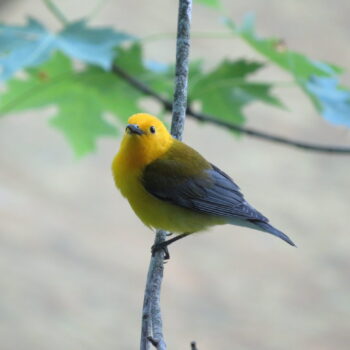
A Prothonotary Warbler captured near Violettes Lock by Greg Humes
While the C&O Canal was spared from becoming a motor highway, it now plays a vital role as a major flyway for birds! During the spring and fall migration seasons, thousands of birds flock to or pass through the park. The park is renowned as a birding hotspot in our region, with Violettes Lock, Lander, and Cumberland frequently attract birdwatchers seeking both common and rare species.
The park offers thousands of acres of interconnected habitats near the coastline, making it the perfect resting spot for birds traveling south this winter. Portions of the park are recognized as Important Bird Areas by the National Audubon Society, both at the state and global levels. Important Bird Areas are areas in the Western Hemisphere that the National Audubon Society and its partners have identified as iconic places that birds depend on the most. Species like Cerulean Warblers, Rusty blackbirds, Louisiana Waterthrushes, and Prothonotary Warblers—all birds of declining population—can all be found in significant numbers along the C&O Canal. As migratory birds return to the skies this season, we’re sharing some of our favorite fall migration finds.
Peregrine Falcon
Seen near Point of Rocks or Maryland Heights in Harpers Ferry, the Peregrine Falcon is thought to be the fastest bird in the world. Speeds over 200 mph have been recorded during its dive. Peregrine Falcons typically nest on cliffs 25–1,300 feet high and follow their food south for the winter.
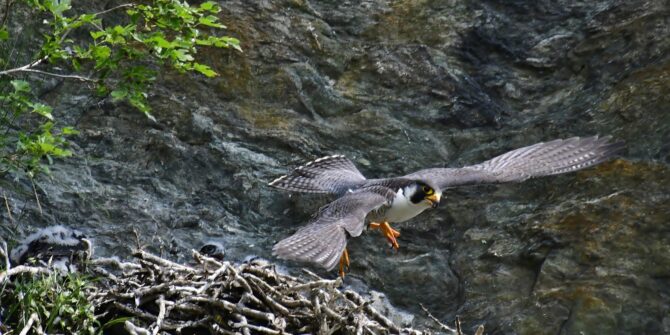
Red-shouldered Hawk
Red-shouldered Hawks thrive in wet forests and can be seen throughout the park. They return to the same nesting grounds each year and can be identified by a distinctive whistle. These hawks have a moderate migration pattern and fly to southern states for the winter.
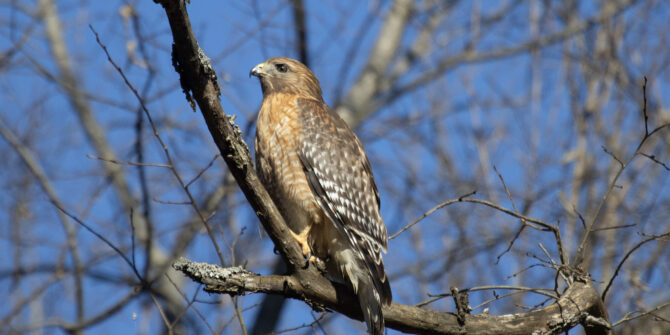
Lesser Yellowlegs
This bird loves shallow wetlands and is primarily found in the Unites States during migration periods. The Lesser Yellowlegs migrates to the top of Canada for breeding season and winters in South America. Though rare along the C&O Canal, the Lesser Yellowlegs is known to make stops in the park during its mirgration.
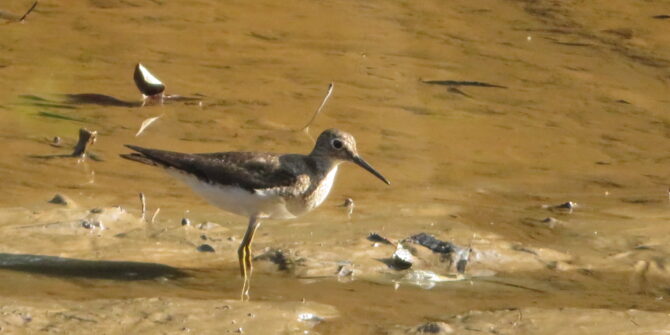
American Bittern
A secretive marsh bird, American Bitterns are usually heard, not seen. With a short to medium migration pattern, American Bitterns fly to southern North America for the winter. Another rare sight, these birds can be found more often in the park during fall migration.
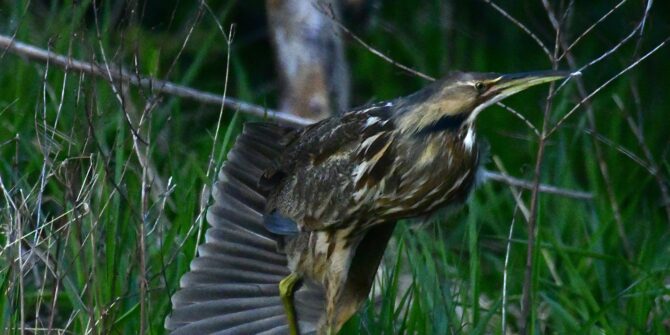
Green Heron
A staff favorite, the Green Heron is a forest wetland bird that mainly feeds on small fish. They have a moderate migration pattern, with much of their travel taking place at night. Eastern C&O Canal Green Herons will migrate to Florida, the Gulf Coast, and the Caribbean, while western birds head through Mexico.
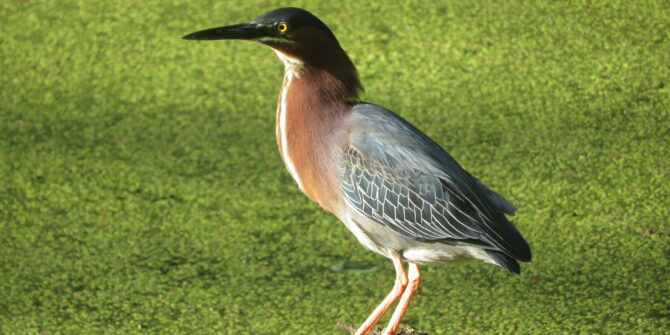
The C&O Canal Trust is proud to support the park’s Natural Resource Conservation initiatives which help to protect habitats critical to sustaining birds during their migration. Our partnership ensures that there is plentiful food, safe resting zones, unparalleled birding opportunities in every season.
Looking to learn more about birds or try out birding? Learn more about how to ID birds in your area and share your sightings on All About Birds or eBird!
Photos by Roy Sewall, Jan Branscome, Susan Petro, and Greg Humes
